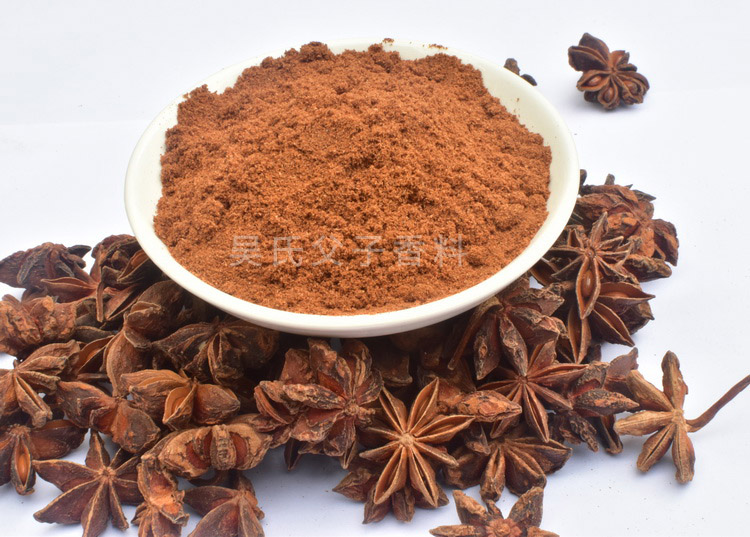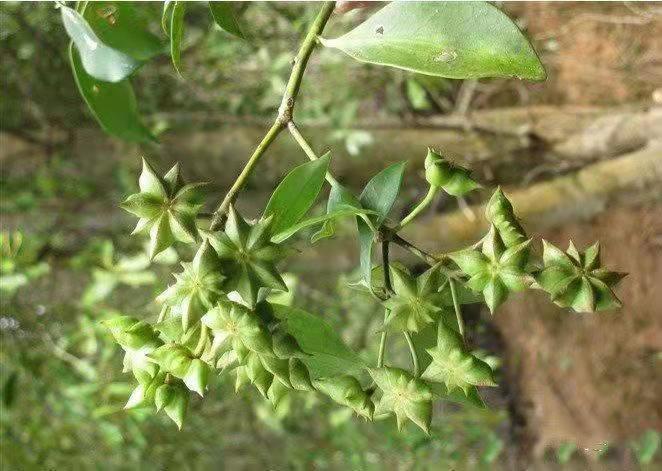
Has the long dormant star anise finally
sparked a new wave of price increases? Just last week, the price of well dried
star anise was hovering around RMB29.25 /kg. As of March 21st, the price of small and
medium-sized star anise in the market has exceeded RMB28/kg, and the price of
large ones has soared to RMB35.00/kg. The price of tree dried star anise has
also risen from RMB14.00/kg before the year to RMB18.00/kg. What is the reason
behind the continuous increase in trading volume and market sentiment, and the
rise in star anise prices this round? Will there be even greater upward
potential in the future? Let's uncover the truth behind this octagonal price fluctuation
together and see what driving factors are hidden behind the market!

I. Analysis of the reasons for the price increase of star anise
1. The yield of star anise spring crop has decreased, while the cost for fresh star anise has increased
The main reason for the price increase of star anise this time is the decrease in the production and stocking volume of star anise spring crop this year, coupled with the rise in cost of fresh star anise, which further pushed up the overall price. Previously, the lcost fresh star anise spring crop was about RMB5.00/kg, making the final price at about RMB25.00/kg, while the price for star anise crop was also around RMB25.00/kg at that time. In contrast, star anise spring crop has a smaller size, lower volatile oil content, and a lighter fragrance, so it does not have an advantage in price.
At present, the price of star anise spring crop has risen to RMB5.80-6.00/kg. The low income of farmers harvesting star anise spring crop has led to their unwillingness to harvest and process it, resulting in a decrease in quantity. The existing star anise inventory is gradually being consumed, but inventory holders of star anise at high price are unwilling to sell at low prices, thus leading to further tightening of market inventory and ultimately driving up the overall price of star anise.
2. The price for star anise autumn crop has risen
The price increase of star anise autumn crop is influenced by the following factors. Firstly, as a highly circulated variety in the spice market, star anise autumn crop has almost daily transactions. Due to a decrease in the supply of star anise spring crop, many customers have turned to choosing star anise autumn crop, leading to a further reduction in market inventory and driving up prices.
Secondly, the overall market situation for star anise is currently on the rise. Considering that the production of star anise spring crop is expected to last until the end of July, many customers believe that the current price is relatively suitable and are restocking in order to maintain inventory until the end of July. Meanwhile, there are reports that the production of star anise autumn crop may decrease this year, which has raised concerns in the market about future supply shortages. Due to market expectations of insufficient supply and rising hoarding sentiment, the pressure of price increases has been further intensified, resulting in a sustained rise in the price of large red star anise in the short term.
II. Can the upward trend continue?
1. In the short term:
The current star anise market presents a situation of coexistence of circulation and inventory pressure. On the one hand, as prices rise, some merchants choose to stockpile inventory and wait for further price increases. On the other hand, the circulation of the market is still relatively active, especially with a large trading volume for the star anise autumn crop. Many merchants are actively restocking to meet market demand.
As April and May are approaching, if the secondary and tertiary markets continue to replenish, the price of star anise may rise slightly. However, there is limited room for price increases, and if prices continue to rise, it may suppress market purchasing intentions. The current price is still within the acceptable range for most merchants, but if the increase is too large, demand will be suppressed. Overall, there is not much room for a significant increase in prices in the short term, and the market is more likely to maintain a pattern of small fluctuations.
2. In the long run:
Looking back at the past, the price of star anise increased significantly in 2019, and the high price continued until 2021. The highest price of fresh fruits from the production area once exceeded 20 yuan/kg, and the income of growers increased significantly. The high enthusiasm of farmers for production has led to a continuous increase in planting area.
In addition, in recent years, the Guangxi government has continuously supported the development of the star anise industry through measures such as financial subsidies, technology promotion, and low yield transformation. For example, in August 2023, the first locally subsidized star anise target price insurance in Guangxi was launched in Bobai County, Yulin City, providing price risk protection for farmers.
From the perspective of historical price cycles, the star anise market has a relatively long fluctuation period, and usually experiences a long period of correction after each bull market. It has been over three years since the last star anise bull market, and the current price is still in the stage of correction and adjustment. Therefore, in the next 3-5 years, the market supply may be excessive, and the possibility of sustained significant increases is relatively small. Prices may hover at low levels, and the adjustment period may also continue for a period of time.
Dear friends, if you are interested in star anise, please feel free to write to our company:
Contact Person: Michael
EMAIL: michael@pnp6.com
Phone: +86-771-5471096
CELL: 18074804455
WEBSITE: http://www.pnp6.com
Tel: 18074804455
Mailbox: pnp6@pnp6.com
URL: http://www.pnp6.com
Address: ADD: RM NO.16-17 FL 8 OFFICE BLDG 2 SHI MAO INTL CENTER NO.17 PING LE AVE NANNING GUANGXI CHINA